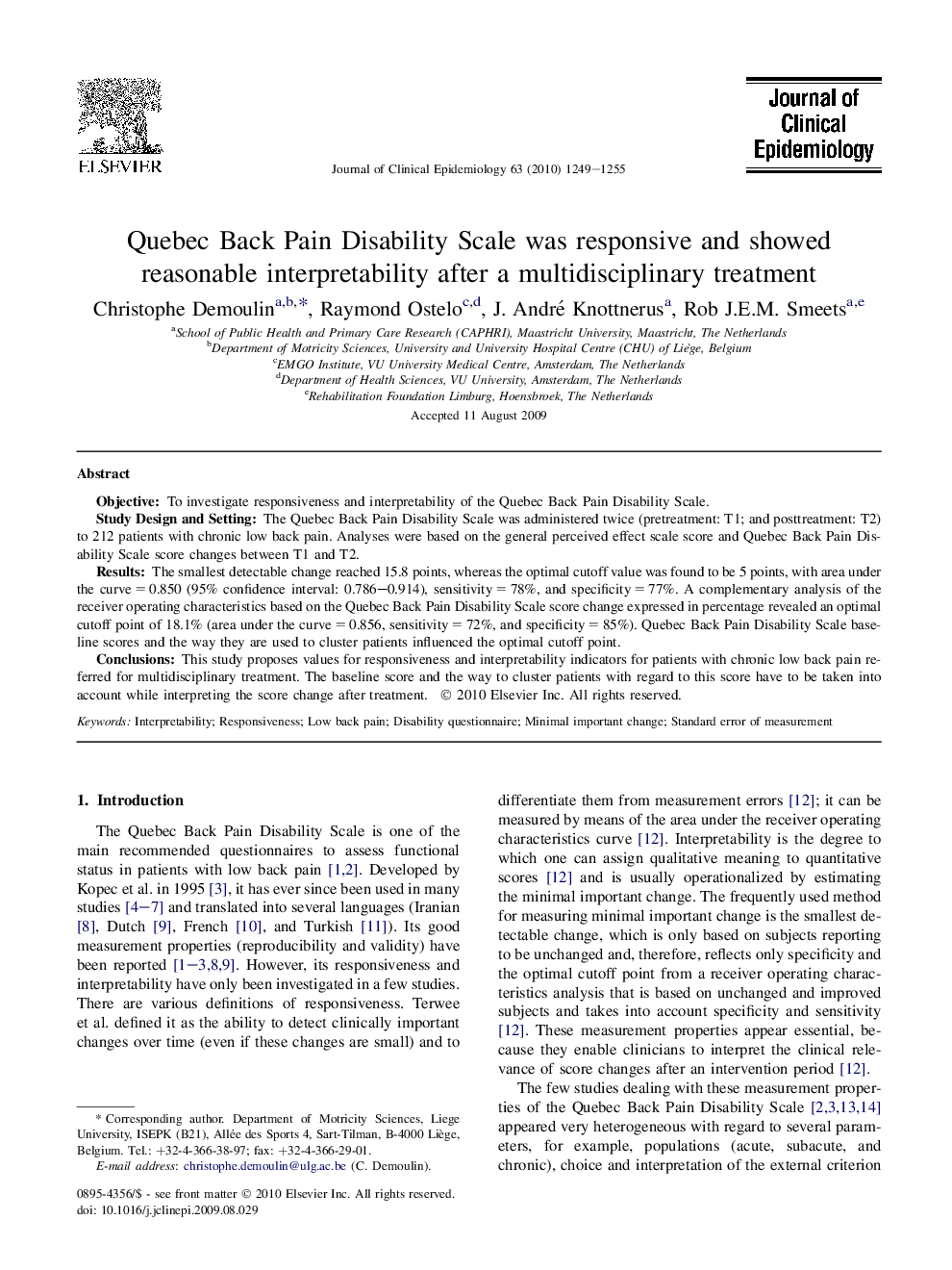| Article ID | Journal | Published Year | Pages | File Type |
|---|---|---|---|---|
| 1082517 | Journal of Clinical Epidemiology | 2010 | 7 Pages |
ObjectiveTo investigate responsiveness and interpretability of the Quebec Back Pain Disability Scale.Study Design and SettingThe Quebec Back Pain Disability Scale was administered twice (pretreatment: T1; and posttreatment: T2) to 212 patients with chronic low back pain. Analyses were based on the general perceived effect scale score and Quebec Back Pain Disability Scale score changes between T1 and T2.ResultsThe smallest detectable change reached 15.8 points, whereas the optimal cutoff value was found to be 5 points, with area under the curve = 0.850 (95% confidence interval: 0.786–0.914), sensitivity = 78%, and specificity = 77%. A complementary analysis of the receiver operating characteristics based on the Quebec Back Pain Disability Scale score change expressed in percentage revealed an optimal cutoff point of 18.1% (area under the curve = 0.856, sensitivity = 72%, and specificity = 85%). Quebec Back Pain Disability Scale baseline scores and the way they are used to cluster patients influenced the optimal cutoff point.ConclusionsThis study proposes values for responsiveness and interpretability indicators for patients with chronic low back pain referred for multidisciplinary treatment. The baseline score and the way to cluster patients with regard to this score have to be taken into account while interpreting the score change after treatment.
